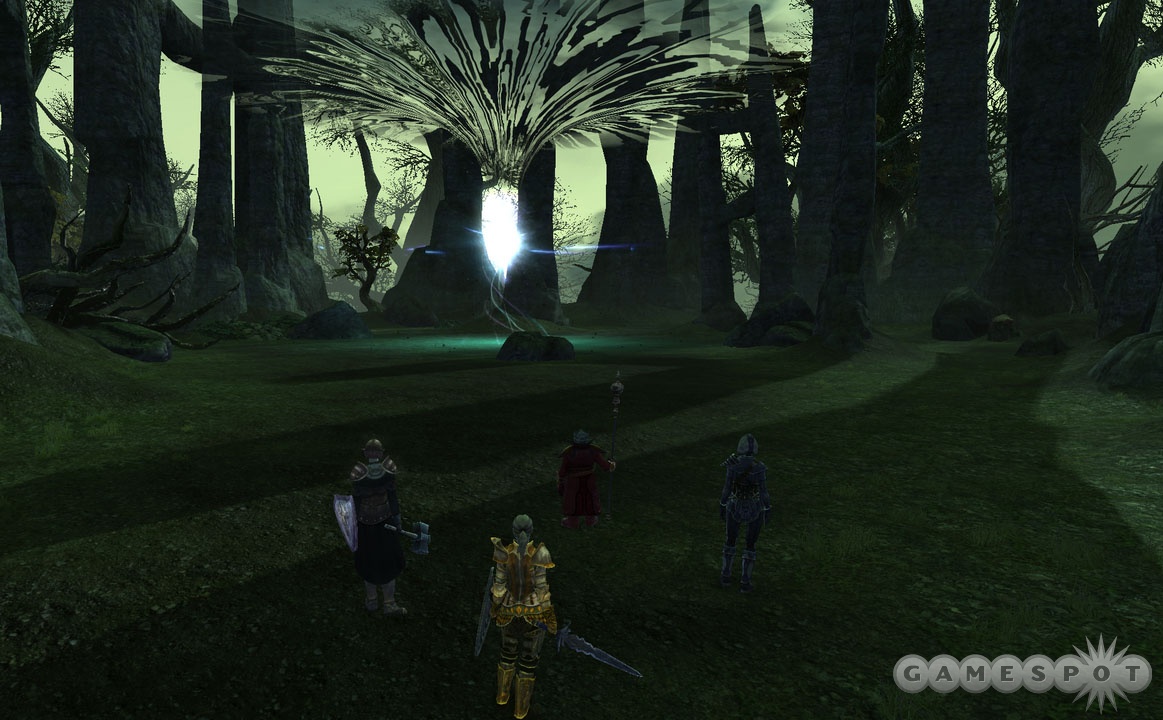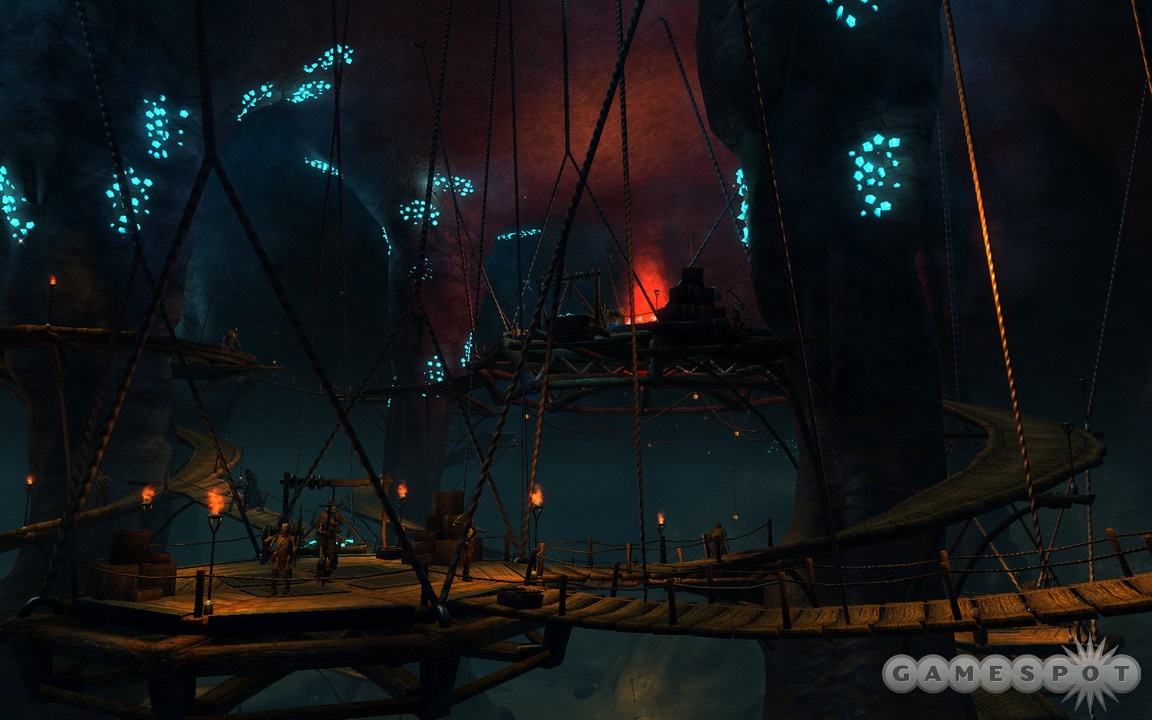We Just Played Rift: Planes of Telara (as the Guardians)
We gave this offbeat fantasy game another spin, this time playing as a character in the Guardians faction, and explored the new dungeon Darkening Deeps.
We recently had the opportunity to try another play session with the alpha version of Rift: Planes of Telara, a massively multiplayer game with an offbeat approach to high fantasy and a strong emphasis on dynamically generated content that spawns from otherworldly portals from other planes of existence. While the E3 demonstration of Rifts focused on the Defiant faction, this time around, we played with characters in the Guardians faction (the game has two different factions with which you can side). Currently, Rift is in an alpha development state, although the studio already has a healthy friends-and-family test running to help track bugs and polish content.
Fallout 4 Next Gen Update Comparison Stellar Blade - Hard Mode No Damage Abaddon Boss Gameplay Stellar Blade - (Almost) All Outfits Granblue Fantasy: Relink - New Content Trailer Modern Warfare III - New Season 3 Reloaded Modern Warfare Zombies Update River City Girls 2 - New Playable Characters DLC Reveal!! Stellar Blade - Hard Mode No Damage Gigas Boss Gameplay That Time I Got Reincarnated as a Slime ISEKAI Chronicles – Official Announcement Trailer MEGATON MUSASHI W: WIRED – Official OP “MUSASHI English Ver.” Trailer Gothic 1 Remake | Official Collector's Edition Trailer SaGa Emerald Beyond – Official Launch Trailer Paper Mario: The Thousand-Year Door – Official Switch Overview Trailer
Please enter your date of birth to view this video
By clicking 'enter', you agree to GameSpot's
Terms of Use and Privacy Policy
The Guardians seek to restore the lost gods of the world to power, but they have been chosen not for their purity of heart, but for their prowess in battle. According to the game's story, your character is the reincarnation of the fallen spirit of a skilled warrior, wizard, or assassin summoned to the world of Telara by Cyril, the first of the Guardians. Cyril and his retinue of elite Guardians inhabit Sanctum, the Guardians' spectacular capital city, whose classical architecture reflects the faction's preference for sorcery (in contrast to the Defiant faction, which prefers technology).
We then watched a hands-off demonstration of an "invasion"--a large-scale assault that happens once an untended rift becomes a foothold. As we've mentioned in other previews, the world of Rift is under siege by invading forces from other planes of existence, such as the plane of fire, the plane of death, and the plane of life (which is inhabited by killer plants). This means that you'll find encroachments from these planes scattered throughout the game's world in the form of rifts in the fabric of reality, which can be activated by players into a skirmish against the planar invaders. However, if players leave a planar rift alone and don't activate it, it eventually matures into a foothold, and can become a full-scale invasion where huge groups of big monsters pour forth. (Interestingly, if players leave rifts unattended, multiple rifts from different planes of existence may spawn in proximity to one another, and the denizens of one plane may begin their own computer-controlled war against the denizens of another.)

We then revisited the game's "soul" system--its unusual character development system that lets your character possess the skills and abilities of up to three different character classes at the same time. We messed around briefly with the skills of a character using the basic rogue archetype with access to several other related professions, including bard (a support class whose powers strengthen allies), assassin (a class specializing in poisons and sneak attacks), blade dancer (a frontline class that focuses on dealing lots of damage per second, or "DPS" in online RPG terms), saboteur (a class that uses various traps both as combat openers and during battle), and rift stalker (a class that specializes in dealing with player-versus-environment battles against rift invaders). The development team suggests that the ability to switch between professions is intended to let players approach the game "how they want to play it" and that the system will let any character fulfill "at least two different roles in battle at any time," citing such diverse combinations as a DPS character that can also heal, or a rogue who can strengthen teammates with magical songs in between stabbing enemies in the back.
The soul interface puts all three of your professions next to one another horizontally, and over the course of your character's advancement, you'll earn points that you can use to purchase specific skills for each class--the classes we saw seemed to have a mostly linear progression that requires the previous skill to unlock the next skill, but the idea is that once your characters have some levels under their belts, they can open up their soul screen and freely take on a different class to fill up one of their three slots and purchase as many skills in that new class as they can afford. You can even save "builds" of whichever combinations of professions and skills you like to carry into different situations (such as a dungeon-focused build versus a rift-focused build).
The final leg of our journey was taking a powerful level-40 rogue character into Darkening Deeps, a new dungeon area in the dreary Gloamwood Pines forest. Darkening Deeps is apparently the site of some kind of unholy mining operation headed up by what appeared to be an army of highly organized undead monsters. The dungeon resembled a rickety, old-timey mine shaft dug into bedrock propped up with wooden slats and illuminated with an eerie reddish glow provided both by ensconced torches and by what appeared to be lava pits. We descended through the topmost levels, which are guarded by pesky goblin hordes, to reach the bottom, only to be bombarded by goblin cannon entrenched at the very top of the mine. It seems that in order to get a clear path into the dungeon, you need to enter the cave and then ascend to the topmost level to get rid of the goblin cannoneers first--otherwise you'll have to avoid the glowing circles that will periodically appear along the cavern floor, marking those areas as targets for artillery fire.

As a rogue with assassin powers, we hung back behind our stronger party members, doing our best to sneak behind our foes to deliver sneak attacks, while also using our suite of other abilities, such as a defensive shield that temporarily protected us from incoming damage once our high damage output drew the ire of our foes, as well as the rogue's point-based attacks, which, like World of Warcraft's rogue attacks, begin with an opening attack that builds up attack points, which can then be expended on follow-up attacks, such as a damage-over-time poison attack and a highly damaging finishing maneuver, which, if used as a killing blow, temporarily strengthens the entire party. We hacked our way through the relatively weak goblins to get at the undead miners and square off against a miniboss character, a giant undead foreman with a whip and a healthy appetite for rogues. Fortunately, we were playing in a party with experienced Trion staffers who were kind enough to peel our foe's attention away from us whenever we got a little too zealous with our damaging backstab attacks, and eventually brought the fiend down. The dungeon experience seems like it should offer as much challenge as any dungeon in any other conventional massively multiplayer game, but the game's open-ended soul system seems like it will give each character more options in battle.
Rift will launch next year.
Got a news tip or want to contact us directly? Email news@gamespot.com

Join the conversation